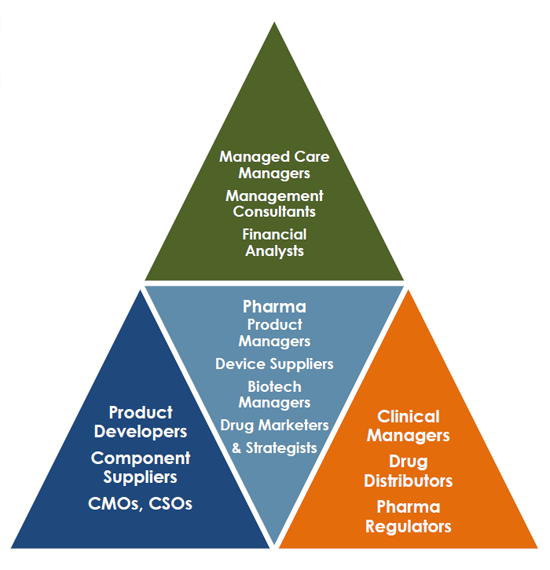 |
市场调查报告书
商品编码
1718479
吸入型中枢神经系统治疗药市场:产品,市场,策略,预测,标的Inhaled CNS Therapeutics - Products, Markets, Therapeutics, Strategies & Forecasts |
||||||
这项新的市场研究吸入式中枢神经系统治疗市场:产品、市场、策略、预测、目标对推动药物传输领域这一成长领域的技术、产品和参与者进行了全面的评估和分析。本报告旨在让製药决策者、药物开发商和配方师、药物设备设计师和产业策略家详细了解吸入式中枢神经系统治疗对製药策略和医疗保健治疗方案日益增长的影响。它对医疗保健业务经理、医疗保健管理员和投资者也将很有用。
成长动力
向中枢神经系统注射药物面临独特的挑战。然而,药物开发商和研究人员发现,透过吸入方式输送中枢神经系统药物可以缓解其中的一些问题。鼻子易于进入且血管丰富,使其成为将小分子药物和生物製剂穿过血脑屏障输送到中枢神经系统的有吸引力的途径。深肺给药可能具有良好的药物动力学特性。与口服药物相比,吸入给药还可以提供更快的起效速度,且所需的给药频率更低。这些潜在的益处促进了针对多种疾病的吸入式中枢神经系统药物的开发。随着人口老化和管理式医疗计划促使家庭医疗保健和药物自我管理的扩大,吸入药物越来越被视为对患者友好且具有成本效益的药物。我们的分析表明,吸入式中枢神经系统传输非常适合利用这些趋势,并将发展成为未来中枢神经系统治疗药物开发和商业化的关键组成部分。
报告的价值矩阵

您将学到什么
- 哪些吸入药物以粉末形式供应,它们如何分发,有哪些设备,以及谁在分发它们?
- 哪些可吸入干粉药物处于后期开发阶段,谁在开发这些药物,以及它们针对哪些适应症?
- 推动吸入干粉药物/设备需求的关键因素有哪些?
- 目前的市场规模是多少,谁是市占率领先者,以及到 2026 年他们的市占率将会是多少?
- 药品开发商和设备製造商之间的关係有多重要?该行业的主要联盟有哪些?
- 干粉吸入产品的关键设计因素、技术和市场发展挑战是什么?
- 影响干粉吸入器市场的关键经济、技术和监管因素有哪些?
调查方法:
该研究方法以对主要市场参与者、技术开发商、分销商、行业专家和市场影响者(包括监管机构、行业协会和材料标准机构)进行深入访谈的形式进行初步研究。
根据行业期刊文章、技术文献、行业出版物、公司数据表和公开声明以及政府机构和行业协会的统计数据等二手资料来源对主要资讯进行评估和标准化。
使用标准建模和统计技术可以估计和预测市场需求和未来市场活动。
目录
- 摘要整理
- 药物传输市场动态
- 自我控制的趋势
- 中枢神经系统药物市场动态
- 家庭医疗保健的成长
- 市场推动因素
- 市场策略
- 吸入药物的主要因素
- 吸收
- 生物利用度
- 设备设计参数
- 鼻内给药的药物动力学
- 鼻腔装置特点
- 肺部给药的药物动力学
- 肺装置特性
- 干膜技术
- 吸入中枢神经系统药物:FDA 核准的产品
- 忧郁症
- 艾氯胺酮(Spravato);杨森製药
- 偏头痛
- 二氢麦角胺甲磺酸盐
- 舒马曲坦(Imitrex)
- 佐米曲坦(Zomig)
- 疼痛管理
- 布托啡诺
- 酮洛酸(Sprix)/Zyla Life Sciences
- 芬太尼/Lazanda
- Adasbe/洛沙平(Galen/美国)
- 癫痫发作
- 地西泮(Valtoco)
- 帕金森氏症
- 左旋多巴(Inbrija)
- 癫痫发作
- 尼迪拉姆(咪达唑仑)
- 吸入式中枢神经系统市场细分分析
- 阿兹海默症和痴呆症
- 忧郁症
- 失眠
- 偏头痛
- 疼痛管理
- 帕金森氏症
- 精神分裂症
- 癫痫发作
- 市场因素
- FDA 法规
- 临床试验
This new market study, "Inhaled CNS Therapeutics: Products, Markets, Strategies, Forecasts, & Targets" is a comprehensive evaluation and analysis of the technology, products and participants providing the driving force behind this growing segment of the drug delivery sector. The report has been designed and developed to provide pharmaceutical company decision makers, drug developers and formulators, drug device designers, and industry strategists with a detailed understanding of the expanding impact of inhaled CNS therapies on pharmaceutical strategies and healthcare treatment protocols. Provider organization business managers, healthcare administrators and investors will also benefit from this publication.
Converging Factors Driving Advances
Delivering drugs to the central nervous system presents unique challenges. But, drug developers and researchers have discovered that delivering CNS therapeutic drugs via inhalation mitigates several of these issues. The accessibility and vascular structure of the nose make it an attractive route for delivering both small molecule drugs and biologics across the blood-brain barrier to the CNS. Pulmonary delivery to the deep lung can have favorable pharmacokinetics. And inhaled delivery offers the potential for faster onset of action and less frequent dosing relative to oral drugs. These potential advantages have spurred activity in inhaled CNS therapeutics for a range of disorders. As aging population demographics and managed care initiatives drive growth in home health care and self-administration of drug therapies, inhaled medicine is increasingly being viewed as patient-friendly and cost-effective. Our analysis indicated that inhaled CNS administration is well positioned to take advantage of these trends and evolve into a significant factor in the future of pharmaceutical development and commercialization of CNS therapeutic drugs.
Report Value Matrix

What You Will Learn:
- What inhalable drugs are supplied in powder form, how are they marketed, what are the device specifics, and who markets them?
- What inhalable dry powder drugs are in late stage development, who are the developers, and what indications are they targeting?
- What are the major factors driving inhaled dry powder drug/device demand?
- What is the size of the market today, who are the market share leaders, and what will the market share be in 2026?
- How important are drug developer-device manufacturer relationships and what are the key alliances in the industry?
- What are the essential design factors, technologies and market development issues for dry powder inhalation products?
- What are the significant economic, technology, and regulatory factors affecting the market for dry powder inhalers?
Methodology:
Research methodology is based on primary research in the form of in-depth interviews with key market participants, technology developers, distributors, industry experts, and market influencers, a list that includes regulatory officials, industry trade groups, and materials standards organizations.
Primary data is evaluated and normalized against secondary sources including trade journal articles, technical literature, industry publications, company data sheets and published information, and statistical data from government agencies and trade associations.
Forecasts and projections of market demand and future market activity are derived using standard modeling and statistical techniques.
Table of Contents
- Executive Summary
- Drug Delivery Market Dynamics
- The Trend toward Self-Administration
- CNS Therapeutic Market Dynamics
- Growth in Home Healthcare
- Market Drivers
- Market Strategies
- Key Inhaled Drug Factors
- Absorption
- Bioavailability
- Device Design Parameters
- Nasal Delivery Pharmacokinetics
- Nasal Device Characteristics
- Pulmonary Delivery Pharmacokinetics
- Pulmonary Device Characteristics
- Dry Film Technology
- Inhaled CNS Drugs: FDA-Approved Products
- Depression
- Esketamine (Spravato); Janssen Pharmaceuticals
- Migraine
- Dihydroergotamine Mesylate
- Sumatriptan (Imitrex)
- Zolmitriptan (Zomig)
- Pain Management
- Butorphanol
- Ketorolac (Sprix)/ Zyla Life Sciences US
- Fentanyl / Lazanda
- Adasuve/Loxapine (Galen / US)
- Seizures
- Diazepam (Valtoco)
- Parkinson's Disease
- Levodopa (Inbrija)
- Seizures
- Nayzilam (Midazolam)
- Inhaled CNS Market Segment Analysis
- Alzheimer's and Dementia
- Depression
- Insomnia
- Migraine
- Pain Management
- Parkinson's Disease
- Schizophrenia
- Seizures
- Market Factors
- FDA Regulations
- Clinical Trials











